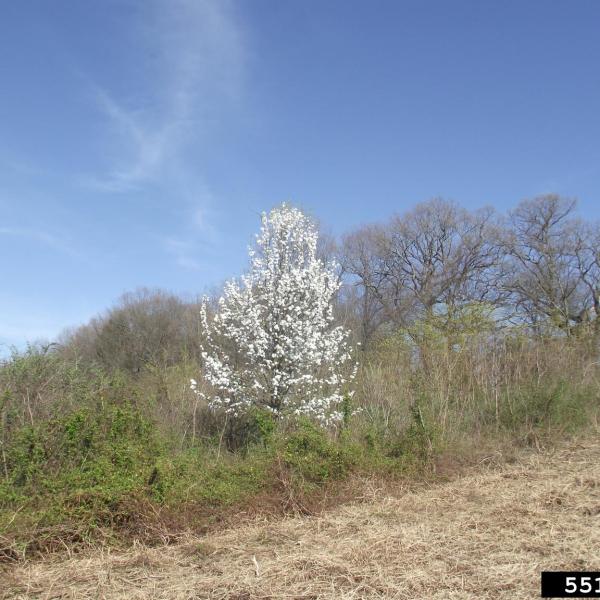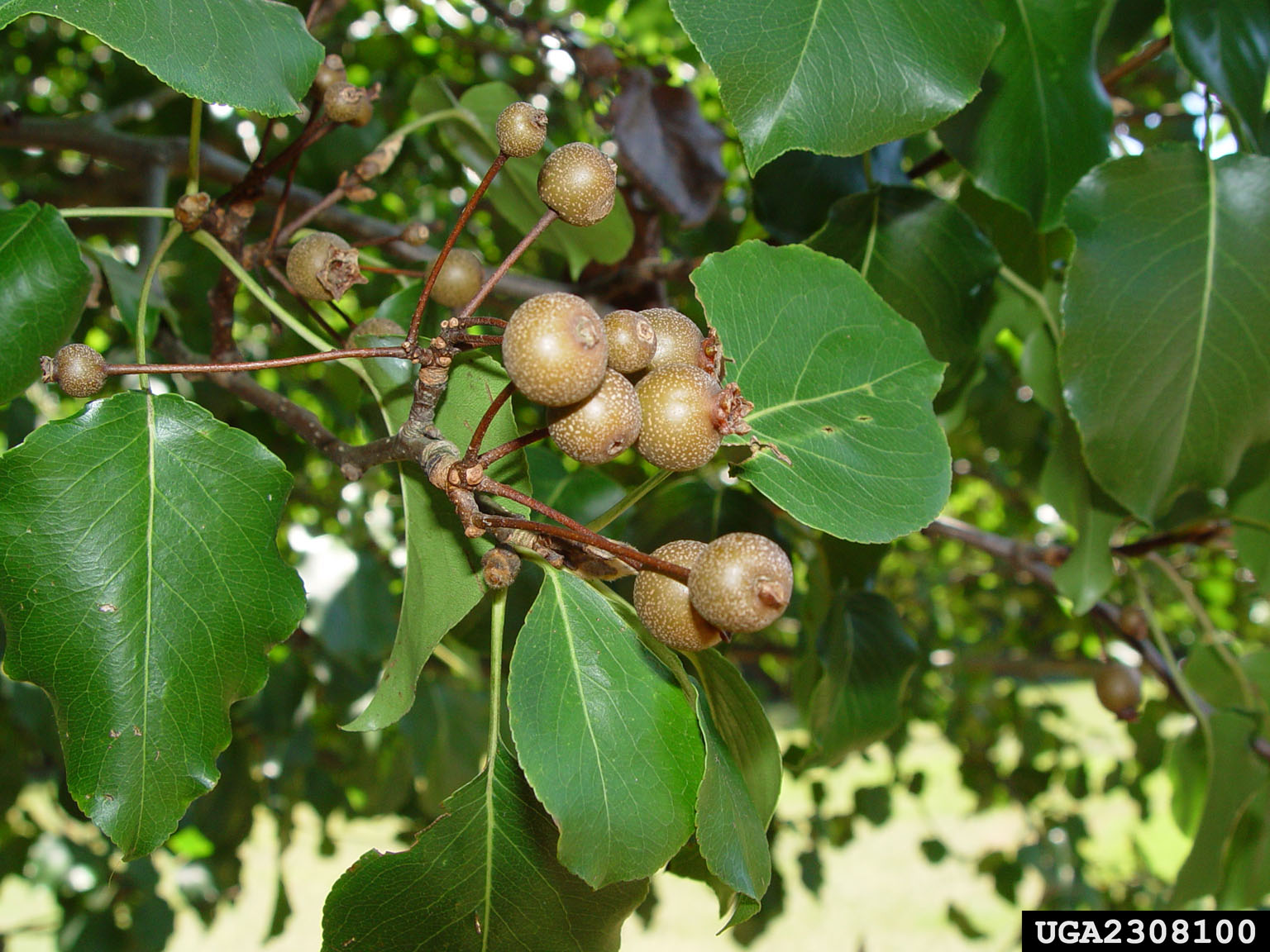
Author: Elizabeth Spinney, Invasive Plant Coordinator, Vermont Department of Forests, Parks & Recreation
December 2022
Invasive Callery pear (Pyrus calleryana and all its cultivated varieties) has been in the news this year; states across the region have been listing this species as a noxious weed – a distinction that carries with it limitations and regulations on the sale and movement of these plants. Not to be confused with common pear (Pyrus communis), which is the source of the pears you’ll find at the farmstand or grocery store, Callery or Bradford pears have small fruits (lacking a calyx) often hidden by foliage, and large thorns. Callery pear evolved in eastern Asia and has been introduced to North America several times since the early 20th century, and it gained popularity in the 1950s as an ornamental and street tree. This plant has been known to escape from cultivation across most of the United States, particularly in the South, Midwest, and southern New England.

Callery pear fruit and leaves. Photo credit: Chuck Bargeron, University of Georgia, Bugwood.org
Callery pear is moderately sized (~40’) deciduous tree, with alternately arranged, oval, dark green leaves, that are finely toothed. The cultivated varieties display variations on foliage color, presence or absence of the thorns, but all will have unpleasantly scented white flowers that appear in early spring prior to the emergence of their leaves. Once claimed to be sterile, cultivated varieties of this species, like the Bradford pear, can produce viable seeds with pollen from any other Pyrus sp. plants, producing fertile progeny. The fruit produced by parent and offspring plants is eaten by wildlife and spread beyond the landscape environment and into natural areas, where it can establish a monoculture, outcompeting and excluding locally evolved species.
As shared earlier, some states have recognized the invasiveness of this species and its cultivated varieties and are enacting bans. Pennsylvania has a ban that took effect in February of this year (2022), Ohio’s ban will take effect in 2023, and South Carolina’s ban will take effect in 2024. Though currently not widely present in northern New England, a predicted warmer climate in the Northeast means that more areas are compatible for the growth and spread of the pears, which are restricted by a cold intolerance (zones 4-9). While not officially listed in Vermont, this plant is considered an early detection invasive species. There are no confirmed locations of this plant escaped from cultivation, so if found, please report them using the Report It! Tool on the VTinvasives.org website.
While Callery pear is only formally banned in one state right now, many places are embarking on removing specimens from public lands, like Indiana’s MC-IRIS initiative that’s proactively supporting community events focused on removal of Callery pear trees, and the city of Providence, RI announced their plans to stop planting Callery pear. And some states are offering tree replacements or buy backs, encouraging landowners to replace Callery pears with locally evolved trees. Great alternatives to Callery pear include chokecherry (Prunus virginiana), American plum (Prunus americana), eastern hophornbeam (Ostrya virginiana), American hornbeam (Carpinus caroliniana), serviceberry/shadbush (Amelanchier arborea), and flowering dogwood (Benthamidia florida syn. Cornus florida). For more information about selecting a tree to plant in Vermont, check out the Second Edition Vermont Tree Selection Guide 2022, produced by the Vermont Urban & Community Forestry Program.
To learn more about Callery pear, check out these additional resources:
- Finger Lakes PRISM
- Woody Invasives of the Great Lakes Collaborative
- PennState Extension – Callery Pear Background
- Journal article on the history of Callery pear in the United States (full text)
Photo credit: (Callery pear tree in field) Richard Gardner, Bugwood.org